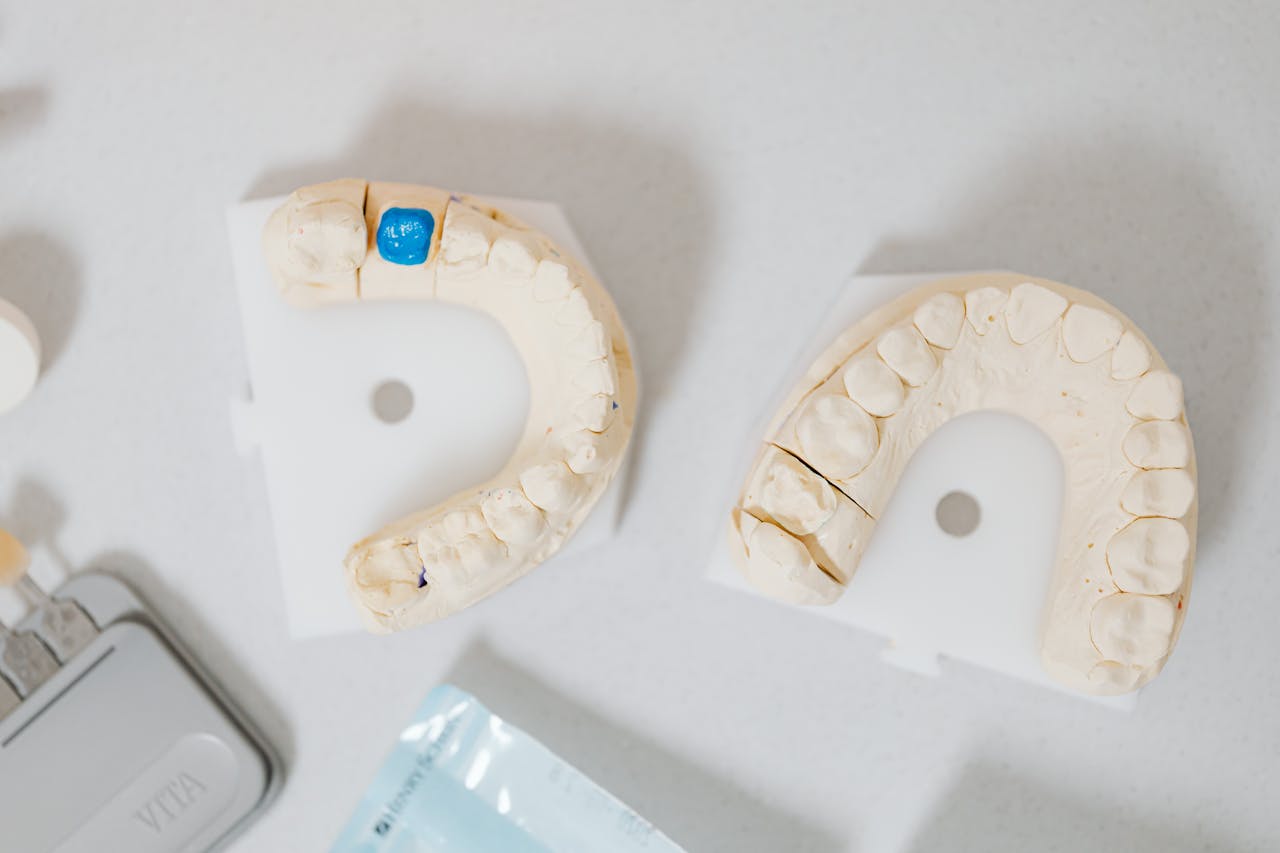What Is a Dental Crown?
A dental crown, often called a “cap,” is a treatment that covers and protects a damaged tooth. But, in dentistry, the term “crown” actually has two meanings. First, it refers to the part of the
tooth that sticks out above the gums. This part doesn’t include the roots, and in a healthy tooth, it’s covered by enamel.
The second meaning of “crown” is a type of dental restoration that completely covers that visible part of the tooth. This kind of crown provides full coverage, replacing all the enamel and
protecting the tooth underneath.
In this blog, we’re focussing on the second meaning of “crown,” which refers to the dental restoration used for several reasons:
● Strengthening Weak Teeth: If a tooth has been damaged by decay or injury, a crown provides essential support, helping to prevent further damage and keeping the tooth functional.
● Restoring Shape and Size: For teeth that are broken or misshaped, a crown can reshape and resize them, making them look more natural.
● Improving Appearance: Crowns can dramatically enhance the look of discoloured or stained teeth, giving you a brighter, more confident smile that you’ll be proud to show off.
Overall, dental crowns play a vital role in restoring both the strength and beauty of your teeth.
What Is a Dental Bridge?
A dental bridge is a treatment that helps replace one or more missing teeth by connecting two or more crowns. Basically, it consists of two crowns placed on the teeth on either side of a falsetooth, called a “pontic,” which fills in the gap where the missing tooth used to be.
Now, let’s talk about why someone might need a crown in the first place. A dental crown covers a damaged tooth when the enamel—the hard outer layer—can no longer do its job. While enamel is tough and designed to handle the wear and tear from eating and drinking, it can still crack, erode from acids, or decay due to cavities.
If your tooth is weakened because of these issues, or if you grind your teeth at night or have had a root canal, a crown can be a great option. It helps protect the tooth and keeps it strong for
the long haul.
● Restores Functionality: With a bridge in place, you can chew and speak more easily, making daily activities much smoother.
● Improves Appearance: A bridge helps complete your smile, so you can feel more confident showing off your teeth.
● Keeps Your Teeth Aligned: By filling that gap, a bridge prevents nearby teeth from shifting out of place, which is good for your overall dental health.
● Supports Your Facial Structure: Replacing missing teeth helps maintain the shape of your face, so you avoid that sunken look that can happen with tooth loss.
● Durability: With the right care, a dental bridge can last anywhere from 5 to 15 years, giving you a solid solution for missing teeth.
Crown & Bridge Process
Consultation
During your initial appointment, your dentist will assess your dental health, discuss any symptoms you may be experiencing, and determine whether a crown or bridge is the appropriate treatment option for you.
Additionally, X-rays may be taken to provide a clearer view of your teeth and jawbone. Then to create a crown or bridge that fits just right, your dentist starts by preparing the tooth. This preparation involves removing the enamel layer so the crown can fit comfortably without being bulky.
They’ll also take out any decay or old filling material. Essentially, they’ll get down to the healthy part of the tooth and then rebuild from there.
Generally, obtaining a crown or bridge involves two visits, including an interim phase where a temporary crown is fixed. This temporary piece protects the tooth and keeps the space ready for the final crown.
Treatment
First, your dentist will apply a local anaesthetic to make sure you’re comfortable during the procedure. Then, they’ll shape the affected tooth by removing its outer layer, so the crown fits just right.
After that, they’ll take an impression of the prepared tooth, usually using modern digital scanning for better accuracy. Finally, they’ll place a temporary crown on your tooth to keep it protected while your permanent crown is being made.
Conclusion
In conclusion, investing in a dental crown or dental bridge is a smart move for your oral health.
This restorative dentistry typically lasts between five and fifteen years, depending on the material and how well you care for it. To help your crown go the distance, prioritise good oral
hygiene at home—brush, floss, and don’t skip those regular check-ups and cleanings with us. We’re here to help keep your smile healthy!
Also, if you’re a tooth grinder or a nighttime clencher, be sure to let us know. We might suggest a protective mouthguard to prevent any damage. By taking these steps, you can enjoy your dental work for years to come.At Primecare Dental, your smile is our top priority. Our first-class dental service and state-of- the-art equipment will ensure that you get the perfect smile that you deserve.
